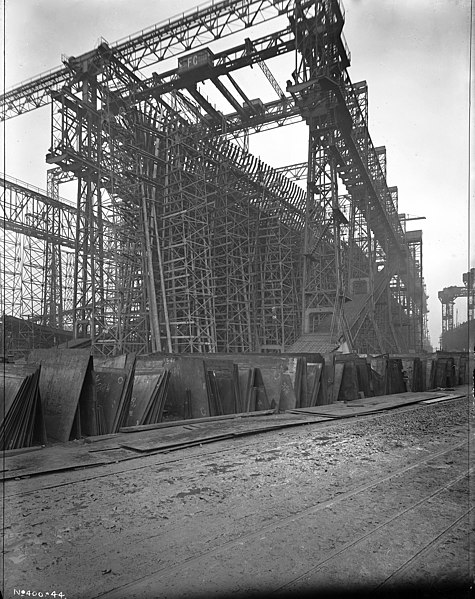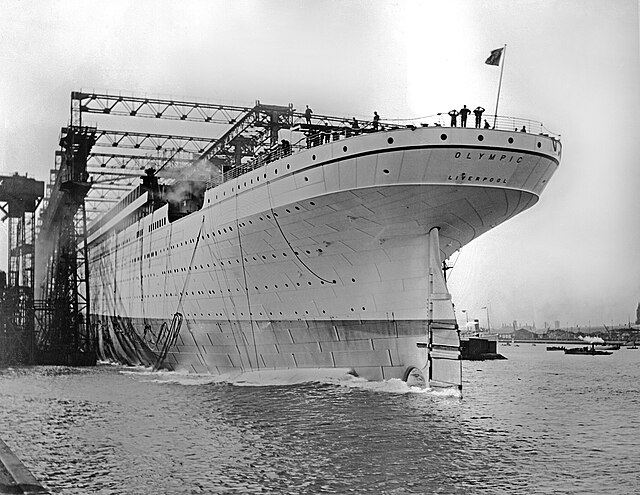RMS Olympic was a British ocean liner and the lead ship of the White Star Line's trio of Olympic-class liners. Olympic had a career spanning 24 years from 1911 to 1935, in contrast to her short-lived sister ships, Titanic and Britannic. This included service as a troopship during the First World War, which gained her the nickname "Old Reliable", and during which she rammed and sank the U-boat U-103. She returned to civilian service after the war, and served successfully as an ocean liner throughout the 1920s and into the first half of the 1930s, although increased competition, and the slump in trade during the Great Depression after 1930, made her operation increasingly unprofitable. Olympic was withdrawn from service and sold for scrapping on 12 April 1935 which was completed in 1937.
RMS Olympic arriving at New York on her maiden voyage, 21 June 1911
Olympic under construction, c. 1909. The Arrol Gantry can be seen towering over the ship. Titanic's keel is visible to the left
Olympic painted grey and ready for launching, c. 1910. Titanic under construction, is visible to the left
The launch of Olympic on 20 October 1910
An ocean liner is a type of passenger ship primarily used for transportation across seas or oceans. Ocean liners may also carry cargo or mail, and may sometimes be used for other purposes. Only one ocean liner remains in service today.
As of 2024[update], RMS Queen Mary 2 is the only ocean liner still in service
RMS Lusitania arriving in New York in 1907. As the primary means of trans-oceanic voyages for over a century, ocean liners were essential to the transportation needs of national governments, business firms, and the general public.
In 1838, Sirius was the first ship to cross the Atlantic using continuous steam power.
The first voyage of SS Great Western (1838)





![As of 2024[update], RMS Queen Mary 2 is the only ocean liner still in service](https://upload.wikimedia.org/wikipedia/commons/thumb/b/b3/Queen_Mary_2_Boston_July_2015_01_%28cropped%29.jpg/640px-Queen_Mary_2_Boston_July_2015_01_%28cropped%29.jpg)


